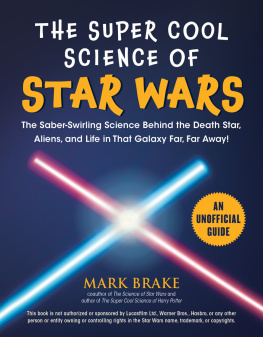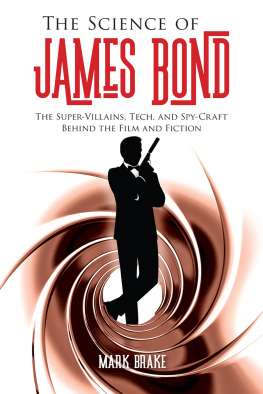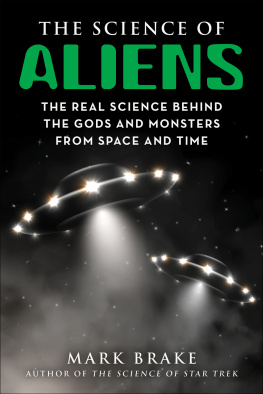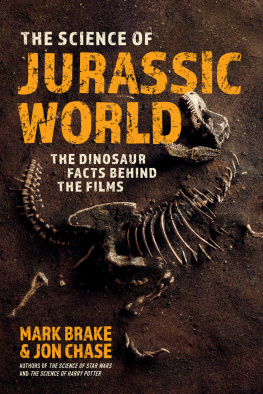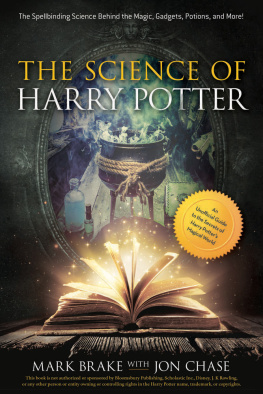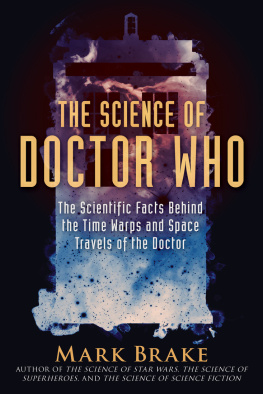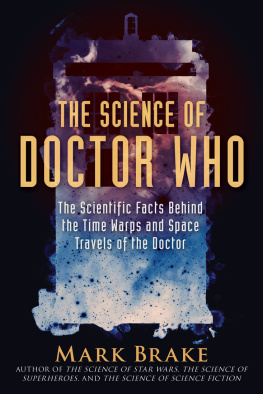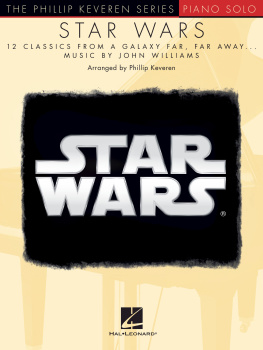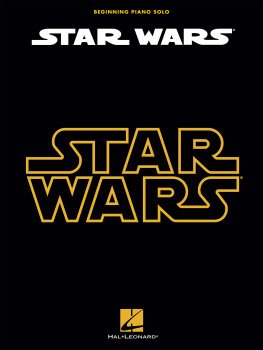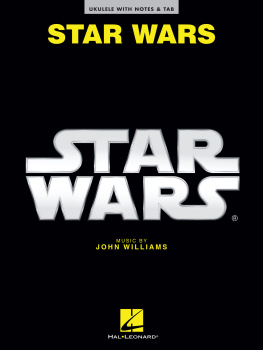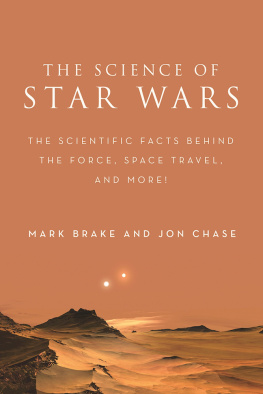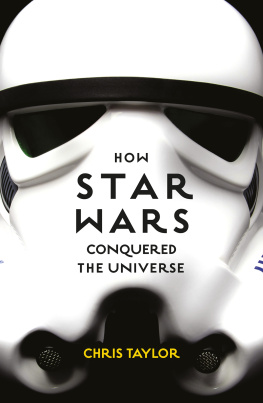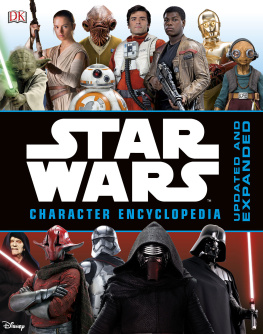

This book is not authorized or sponsored by Lucasfilm Ltd., Warner Bros., Hasbro, or any other person or entity owning or controlling rights in the Star Wars name, trademark, or copyrights.
Copyright 2020 by Mark Brake
All rights reserved. No part of this book may be reproduced in any manner without the express written consent of the publisher, except in the case of brief excerpts in critical reviews or articles. All inquiries should be addressed to Sky Pony Press, 307 West 36th Street, 11th Floor, New York, NY 10018.
Sky Pony Press books may be purchased in bulk at special discounts for sales promotion, corporate gifts, fund-raising, or educational purposes. Special editions can also be created to specifications. For details, contact the Special Sales Department, Sky Pony Press, 307 West 36th Street, 11th Floor, New York, NY 10018 or .
Sky Pony is a registered trademark of Skyhorse Publishing, Inc., a Delaware corporation.
Visit our website at www.skyponypress.com.
10 9 8 7 6 5 4 3 2 1
Library of Congress Cataloging-in-Publication Data is available on file.
Cover design by Daniel Brount
Cover photos by gettyimages
Print ISBN: 978-1-5107-5378-5
Ebook ISBN: 978-1-5107-5379-2
Printed in China
TABLE OF CONTENTS
INTRODUCTION
I have a long history with Star Wars and sci-fi. In the same summer that brought Star Wars: Episode I: The Phantom Menace, Id set up planet Earths first science and science fiction university degree program. The worlds press were very interested, of course. So I told them the program would allow students to study science fictionfrom Mary Shelleys Frankenstein to the current Star Wars movie. Back in 1999, the program looked at the link between science fiction and real science. And ever since Ive been doing just that: Writing books that look at the link between sci-fi and the real science behind it.
This book does the same. Through the stories of Star Wars, we see our universe in a new light. Almost on a daily basis, science shows us something new, and even shocking, about the world in which we live. It may even make us think again about the way we relate to the rest of the universe. You know the kind of thing I mean. The countless galaxies in the cosmic deep, wheeling their way through space-time. The rise of the robot: What does the future hold for humans, as the number of robots grows? The discovery of the human genome: What will humans one day become, if we are able to engineer ourselves? The universe, it seems, is a strange place, and getting stranger all the time!
Science fiction like Star Wars is made as a kind of answer to the strangeness of the universe. And the stories of Star Wars help us come to terms with this new universe, as it is uncovered by science. Star Wars helps us think about the taste, the feel, and the meaning of the new discoveries of science. Star Wars puts a human face back on to the universe. It makes human what was once alien.
Sure, maybe there are more stars in the universe than grains of sand on all of Earths beaches. Perhaps 100 billion galaxies flow in deep space, outside our tiny Milky Way. But Star Wars makes you feel we could still own our galaxy. Earth may no longer sit at the center of the universe. Our sun may no longer be the only star with planets. But with small steps and an outward urge (and hopefully our own Millennium Falcon!), the galaxy could someday be ours.
The science of space is strange indeed. But so is the science of biology. Darwins theory of how things evolve was a big step in our understanding of all things. But Darwins theory doesnt just apply to planet Earth. It applies to all other planets on which life arises. And so Darwins discovery has had a huge impact both on how we see ourselves as humans and on the idea of alien life in the universe.
Star Wars helps. Its stories help us imagine what life might be like on alien planets and in extraterrestrial settings. So theres something revolutionary about Star Wars. Painting pictures of the universe, as it does, has a huge effect on uswe see the cosmos has changed in our minds. By imagining the strange worlds of Star Wars, we come to see life in the universe in a new way.
Its so easy to be dazzled by the infinity of visions Star Wars shows us. All those star systems and planets, alien species and spaceships, droids and cyborgs, light tricks and life forces. But, when you think about it, Star Wars is simpler. Its all about the relationship between whats human and whats not human.
So thats how this book is set out. Its divided into four themes: space travel, space, aliens, and tech. Each of these themes is a way of looking at the relationship between whats human and whats not human. Taking a closer look at these themes will show us the genius of Star Wars, as if a glowing lightsaber were being held to it! It will show the way in which Star Wars works.
Space travel. Having the vast theater of space is one thing. But how do you get from one star system to another? This theme deals with the question of journeying to the stars, including faster-than-light travel, hyperspace, and a certain space station.
Space. Space in Star Wars is a vast theater in which the stories unfold. But its also a feature of the nonhuman, natural world, filled with stars and habitable planets.
Aliens. If space truly is a vast theater of planets, then what kind of creatures lurk in the depths of space? Star Wars has created some of the most famous alien life-forms in all of film and fiction.
Tech. What will the future bring in the form of machines? Star Wars has plenty to say about the rise of the robot. And what might humans one day become? Whether through redesigning our genes, or using tech, Star Wars takes a peek at our future.
Before we begin, heres a tip on how to get your head around the idea of the huge universe in which we live. When I was in school, for some reason lost to me now, my friends and I used to fill in the This Book Belongs To section in the following way:
Name: ______________________________________________
Address: ____________________________________________
City: _______________________________________________
State: _______________________________________________
Country: ____________________________________________
Continent: ___________________________________________
Planet: Earth _________________________________________
Star System: Sol ______________________________________
Galaxy: Milky Way ___________________________________
Galaxy Supercluster: Virgo _____________________________
Filling in your own details may help you begin your journey from our planet Earth, and out to that galaxy far, far away. So join me now in my open-minded search for science in the worlds most popular science fiction universe.
Mark Brake, 2020
PART I
SPACE TRAVEL
HOW HAS STAR WARS INFLUENCED THE WAY WE THINK ABOUT SPACE TRAVEL?
S cience fiction like Star Wars is not just in the movies anymore. Why? Think about the world in which you live. For the first time in history, media headlines talk about the discovery of planets outside our solar system. Planets that may look like Tatooine and Hoth. When you switch on your television, you get glimpses of a future that will soon see cars driven by droids. Space stations orbit our planet, and robotic space probes rendezvous with asteroids. Scientists tell us that the spacecraft of the future will use solar sails, in a similar way to the solar panels used by the Empires TIE fighters in
Next page
